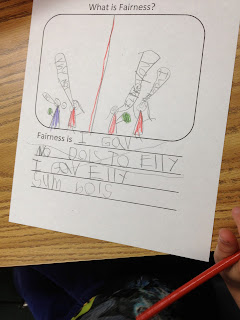We are deeply troubled to hear about the shooting in a Connecticut elementary school. This tragedy is heartbreaking and our thoughts and prayers are with the families of Newtown, Connecticut. Your child may have many questions for you regarding why this horrible incident occurred. Our Districts Learning Support Department recommends the following tips for parents as they discuss this tragedy with their children. This guidance is provided from the American School Counseling Association.
- What Can You Do?
Reassure your child or teen that he or she is safe, and that you are also okay by doing the following:
- Listen!
- Maintain routines.
- Turn the television off or allow your child to only watch shows that aren’t covering the incident. (Adolescents may need to watch because, like adults, they have a need to know. Keep it to a minimum – no more than a half-hour and be sure to discuss what your child saw and heard by asking questions and listen carefully to responses and opinions.)
- Do not criticize any regressive behaviors, such as a child’s need for comfort food. Allow your child to be sad or afraid. Reassure your child that you will be there to take care of them. Tell your child that the sadness, hurt, or fear that may be felt now will change in time.
- Encourage your child to exercise some sense of control for the next few days by letting them make decisions about what they want to eat and wear.
- Spend time together. This means together, not you in one part of the house while your child is in another part of the house.
- Encourage your child to engage in physical activities as well as activities that let them feel better.
- Explain that it is normal to feel sad or worried but the United States is a strong country and officials are working hard to keep everyone safe.
- When needed, help separate fact from fiction. Fiction tends to escalate one’s fears.
- Do not speculate or exaggerate.
- Since research shows elementary students are not old enough to process tragic events such as shootings, terrorist attacks and other violent incidents, it is best to limit media exposure.
- Please be cautious in your conversations and it is advised to not discuss the media coverage in front of them
- Please be cautious in your conversations and ensure and reiterate that there are many caring adults at their school working hard to keep them safe.
- In all aged children it is essential that caregivers attempt to keep a child’s daily schedule as close to their own routine as possible. Children become easily agitated when they do not know what to expect next. If there is a change in their routine, let them know before it happens if at all possible. Communicating with children helps to restore their trust in you as a caregiver.
- Children grieve intermittently. Children’s grief is similar to a ping-pong ball; you never know which direction they are headed. Therefore, follow children where they lead you. Allow them to tell their story, on their terms, magically or seriously, let them lead! It is important to find ways to help a child who is particularly worried feel safe. One way to do this is to develop safety plans at home in case it is necessary to seek help or assistance. Part of the process of defusing fear should be directed to helping children feel empowered not only in terms of inner resources, but also practical ways for coping.
- Ask your child to put their hand on an 8 1/2" x 11" piece of paper and spread their fingers. Then ask the child to trace their hand print. On the fingers of the hand print ask them to write the names and phone numbers of people your child can call for help should he or she need it.
- On another piece of paper help your child make a safety plan. Have your child write down all the things he or she can do to feel safe and happy.
- This activity can be creative and many children enjoy coloring the image. Younger children may need help identifying phone numbers, but try to help the child list as many people as possible; list the people or phone numbers on the fingers of the hand. You might also consider helping your child develop a “ home safety plan”—how to run to a neighbor’s house or dial 911. Austin Independent School District School Counselors, Child Study System, and the District's Crisis Response Team which is comprised of Licensed Social Workers and Licensed Counselors are trained and prepared to provide support for students during their school day. If you have questions or concerns please contact your child's school or you may contact the AISD Learning Support Services Department.
- Learning Support Services Department 512-414-0873
Retrieved from: http://www.austinisd.org/announcements/talking-about-tragedy-tips-parents-discuss-school-shooting-connecticut-children




















